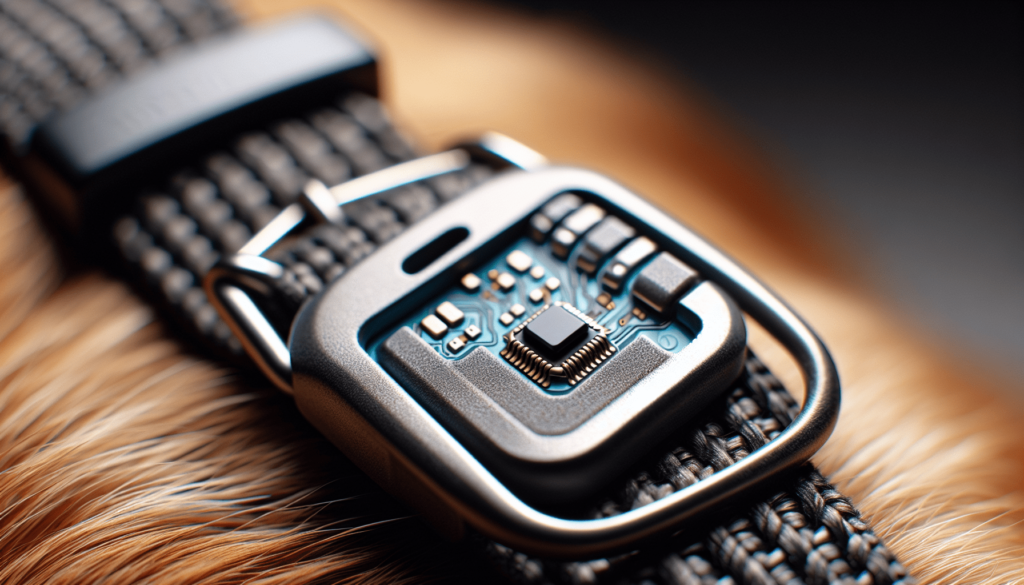
Engaging your community in animal protection is a powerful way to raise awareness and create meaningful change. One key aspect of animal welfare that often concerns pet owners is the ability to track their dogs. Many people wonder if it’s possible to track their furry companions using a microchip. In this article, we will explore the topic of tracking dogs with microchips, shedding light on how microchips work and whether they can truly help locate your beloved four-legged friend.
What is a microchip?
A microchip is a small electronic device that is about the size of a grain of rice. It is implanted under the skin of an animal, typically in the neck or shoulder area. The microchip contains a unique identification number that can be read using a specialized scanner. This ID number is linked to the owner’s contact information in a database, allowing for easy identification and reunification with a lost pet.
Definition of a microchip
A microchip is a small electronic device that uses radio frequency identification (RFID) technology to store and transmit information. It is encased in biocompatible glass or polymer, making it safe for implantation in animals. The chip contains a unique ID number that can be read by a microchip scanner, allowing for easy identification of the animal and retrieval of their owner’s contact information.
How microchips work
Microchips work by emitting a low-level radio frequency signal when scanned by a compatible reader. The scanner sends out a signal that activates the microchip, causing it to transmit its unique ID number. The scanner then receives this signal and displays the ID number on its screen. This number can be used to search a database and retrieve the owner’s contact information, facilitating the reunion of a lost pet with its owner.
Benefits of microchipping
Microchipping offers several benefits for pet owners. Firstly, it provides a permanent form of identification that cannot be easily lost or removed like a collar or ID tag. This makes it a reliable method of ensuring the safe return of a lost pet. Additionally, microchips are a safe and minimally invasive procedure, with very few reported complications or adverse reactions. Finally, microchipping is a cost-effective solution, with a one-time fee that provides a lifetime of protection for your furry friend.
Microchipping your dog
Microchipping your dog is an essential step in ensuring their safety and well-being. It provides a reliable form of identification that can help reunite you with your lost or stolen pet.
Why microchip your dog?
Microchipping your dog offers peace of mind, knowing that if they were to ever go missing, they have a much higher chance of being found and returned to you. Dogs can easily lose their collars or ID tags, leaving them unidentifiable to strangers who may find them. A microchip is a permanent form of identification that cannot be easily lost or removed, ensuring that your dog will always have a way to be linked back to you.
The microchipping procedure
The microchipping procedure is a quick and relatively painless process for your dog. A veterinarian or trained professional will use a sterile needle to inject the microchip under the skin, typically between the shoulder blades. The procedure is similar to a routine vaccination and does not require anesthesia or sedation. Most dogs tolerate the procedure well, and any discomfort experienced is usually minimal and temporary.
Cost of microchipping
The cost of microchipping can vary depending on factors such as location and the veterinarian or professional performing the procedure. On average, the cost of microchipping a dog can range from $25 to $50. However, this is a one-time fee that provides lifelong protection for your pet. Considering the peace of mind and increased chances of being reunited with your furry friend in the event of separation, the cost is relatively minimal.
Finding a professional vet
When it comes to microchipping your dog, it is important to choose a reputable and experienced veterinarian or professional. Look for someone who is knowledgeable about microchipping procedures, uses high-quality and ISO standard microchips, and has a good track record of successful implantations. You can ask for recommendations from friends, family, or other pet owners, or conduct research online to find a trusted professional in your area.

Microchip tracking technology
Microchip tracking technology takes the benefits of microchipping a step further by offering the ability to actively track and locate a lost pet.
How microchip tracking works
Microchip tracking works by combining the standard microchip with additional technology, such as GPS or RFID. This allows for real-time tracking of the animal’s location, providing pet owners with peace of mind and the ability to quickly locate their lost pet. The microchip emits a signal that can be picked up by tracking devices or scanners, enabling the pet’s movements to be monitored and tracked.
Types of microchip tracking devices
There are two main types of microchip tracking devices: GPS (Global Positioning System) and RFID (Radio Frequency Identification). GPS tracking devices use satellite technology to pinpoint the exact location of the microchipped pet. These devices require an active subscription and often have a mobile app or website interface for pet owners to track their pet’s location in real-time. RFID tracking devices, on the other hand, rely on proximity scanning and can be used by animal shelters, veterinary clinics, or concerned individuals to locate and identify a lost pet.
GPS vs. RFID
Both GPS and RFID tracking devices have their advantages and limitations. GPS trackers provide real-time location data and are ideal for pet owners who want to actively monitor and track their pet’s movements. However, they require a subscription, regular charging, and may have limitations in areas with poor satellite coverage. RFID trackers, on the other hand, do not require a subscription, are generally more affordable, and can be scanned using standard microchip scanners found at animal shelters and veterinary clinics. However, they do not provide real-time location data and rely on someone scanning the microchip to identify the pet’s owner.
Advantages and limitations of microchip tracking technology
Microchip tracking technology offers several advantages, including the ability to quickly locate and retrieve a lost pet. It provides peace of mind to pet owners and increases the chances of a successful reunion. However, it is important to note that microchip tracking technology is not foolproof. It relies on the pet being found by someone with a microchip scanner or by a GPS tracking device with a sufficient signal. Additionally, there may be limitations based on the specific technology used, such as battery life, signal strength, or coverage area.
Finding a lost dog with a microchip
If your dog goes missing, having a microchip greatly increases the chances of finding and being reunited with them. Here are some steps you can take to aid in the search and recovery process.
Registering your dog’s microchip
Once your dog has been microchipped, it is crucial to register their microchip with a reputable database. This involves providing your contact information, as well as any additional details about your pet, such as their breed, age, and distinguishing features. By registering your dog’s microchip, you ensure that your contact information is easily accessible to anyone who scans the chip.
Contacting the microchip registry
If your dog goes missing, one of the first steps you should take is to contact the microchip registry associated with your pet’s microchip. Provide them with the necessary information, such as your dog’s unique ID number, and notify them that your pet is missing. This way, if someone finds your dog and takes them to a shelter or vet clinic, they can easily scan the microchip and contact you.
Working with animal shelters and veterinary clinics
Reach out to local animal shelters, veterinary clinics, and rescue organizations to inform them that your dog is missing. Provide them with a description of your pet, any identifying features, and their microchip information. These establishments often have microchip scanners on hand and can quickly identify your pet and contact you if they are found.
Utilizing online lost and found platforms
Take advantage of online lost and found platforms that are specifically designed to help reunite lost pets with their owners. These platforms allow you to create a profile for your missing pet, including their photo, description, and microchip information. This way, if someone finds your dog and searches online for lost pets in their area, they may come across your listing and contact you.

The effectiveness of microchip tracking
Microchip tracking has proven to be highly effective in reuniting lost dogs with their owners. Here are some success stories and statistics that highlight the effectiveness of this technology.
Success stories of tracking lost dogs
Countless stories have emerged of lost dogs being successfully tracked and reunited with their owners thanks to microchip technology. One such story involves a dog named Max, who went missing for over a month. Max was found by a Good Samaritan who took him to a local animal shelter. Upon scanning Max’s microchip, the shelter was able to contact his owner, who was overjoyed to have him back home.
Statistics on successful microchip reunions
According to the American Veterinary Medical Association (AVMA), about 52% of microchipped dogs are reunited with their owners. This statistic highlights the significant impact that microchips can have in ensuring lost pets are returned to their loving homes. The AVMA also reports that the rate of reunion increases to over 74% when microchipped cats are involved.
Factors that affect tracking accuracy
While microchip tracking has proven to be highly effective, certain factors can impact its accuracy. Interference and signal disruptions, such as buildings or dense vegetation, can affect the signal strength and make locating a dog more challenging. Additionally, the compatibility of scanning devices with different microchip types can also impact the accuracy of tracking. It is essential to ensure that the microchip used in your pet is compatible with the scanners commonly used in your area to maximize the chances of successful tracking.
Potential challenges of microchip tracking
While microchip tracking technology offers significant benefits, there are some potential challenges and limitations to be aware of.
Interference and signal disruptions
Microchip tracking can be susceptible to interference and signal disruptions, especially in urban areas with tall buildings or dense vegetation. These obstacles can weaken the signal strength and make accurate tracking more difficult. It is important to consider these factors and understand that there may be limitations in certain environments.
Compatibility issues with scanning devices
Not all microchips and scanning devices are created equal. Some microchips use different frequencies or encoding methods, making it important to ensure that the scanning devices used by animal shelters, vet clinics, and other pet professionals are compatible with your pet’s microchip. Incompatibility between the microchip and scanner could result in the microchip information not being read or recognized, hindering the tracking process.
Errors or inaccuracies in microchip information
Microchip tracking relies on the accuracy of the information stored in the database associated with the microchip. It is crucial to regularly update the contact information associated with your pet’s microchip to ensure that it is up to date. Errors or outdated information could lead to delays or difficulties in locating and contacting the owner of a lost pet.
Lack of awareness and education
One potential challenge with microchip tracking is the lack of awareness and education among pet owners. Many people may not be familiar with microchipping or the benefits it offers. It is important for pet owners to educate themselves about microchip technology and actively pursue microchipping their pets to increase the chances of a successful reunion if their furry friend were to ever go missing.
Additional considerations for dog owners
While microchipping provides an effective way to identify and locate a lost dog, there are additional considerations for dog owners to keep in mind.
Updating contact information
Regularly updating your contact information associated with your pet’s microchip is crucial. If you move or change phone numbers, be sure to notify the microchip registry and update the database accordingly. This ensures that if your pet is found, the contact information provided is accurate and up to date.
Regularly scanning the microchip
It is recommended to have your pet’s microchip scanned at least once a year during their routine veterinary check-up. This ensures that the microchip is still functioning correctly and that the contact information is still accurate. Veterinary clinics, animal shelters, and some pet stores have microchip scanners readily available.
Supplementing microchipping with other identification methods
While microchipping is an effective form of identification, it is always a good idea to supplement it with other identification methods. This can include fitting your pet with a collar and ID tags that have your contact information clearly displayed. These identifiers can serve as a visible form of identification and provide additional information to anyone who finds your pet.
Keeping your dog’s microchip information confidential
The information associated with your dog’s microchip is sensitive and should be kept confidential. Be cautious about sharing this information publicly or on social media platforms. It is essential to balance the need for identification with the importance of keeping your personal information secure.
Legal and ethical considerations
Microchipping raises various legal and ethical considerations that both pet owners and society as a whole must take into account.
Laws and regulations surrounding microchipping
Different countries and jurisdictions have varying laws and regulations regarding microchipping. Some areas may have mandatory microchipping laws, while others may have specific requirements regarding registration and database maintenance. It is important for pet owners to familiarize themselves with these laws and ensure compliance to ensure the safety and well-being of their pets.
Ethical implications of microchip tracking
Microchip tracking raises ethical questions regarding privacy and the potential for misuse of personal information. While the primary purpose of microchipping is to reunite lost pets with their owners, it is essential to consider the potential implications and ensure that personal data is handled securely and responsibly.
Balancing privacy and safety concerns
There is a delicate balance between ensuring the safety of our pets and respecting the privacy of individuals. Microchip tracking technology provides an effective means of pet identification and recovery, but it requires responsible management of personal information. As technology continues to advance, it is important to find a balance between privacy concerns and the safety and well-being of our furry companions.
Alternatives to microchip tracking
While microchip tracking is an effective method of pet identification and retrieval, there are alternative options available for dog owners to consider.
Collar with ID tags
A traditional collar with identification tags is a simple and visible form of identification for your dog. It allows anyone who finds your pet to quickly contact you. However, it is important to remember that collars and tags can be lost or removed, making it a less reliable option compared to microchips.
GPS wearable devices
GPS wearable devices for pets have become increasingly popular. These devices are attached to your pet’s collar and utilize GPS technology to track their location in real-time. They often come with mobile apps or websites that allow you to monitor your pet’s movements and set up virtual boundaries. While effective, these devices usually require active subscriptions and regular charging.
Smartphone apps for dog tracking
There are smartphone apps available that utilize GPS technology to track your dog’s location. These apps often work in conjunction with a GPS-enabled collar or tag and provide real-time tracking data. However, it is important to consider battery life and signal strength when relying on smartphone apps for tracking.
Training and behavior management
While not a direct form of identification or tracking, investing in training and behavior management can help prevent dogs from becoming lost in the first place. Teaching your dog recall commands, providing a secure and supervised environment, and addressing any behavioral issues can significantly reduce the risk of your dog wandering off or getting lost.
Conclusion
Microchipping your dog is a responsible and effective way to ensure their safety and increase the chances of being reunited if they were to ever go missing. Microchip tracking technology further enhances this capability by providing real-time tracking and location data. While microchipping and tracking offer many benefits, it is essential to weigh the limitations and potential challenges. It is important to balance privacy concerns with the safety and well-being of our pets, and to explore alternative identification and tracking methods to find the best approach for you and your furry friend. Responsible pet ownership includes utilizing the available technologies and resources to protect and care for our beloved companions. By microchipping and staying informed about the latest advancements in pet identification, we can provide our dogs with the best chance of a safe and happy life.







